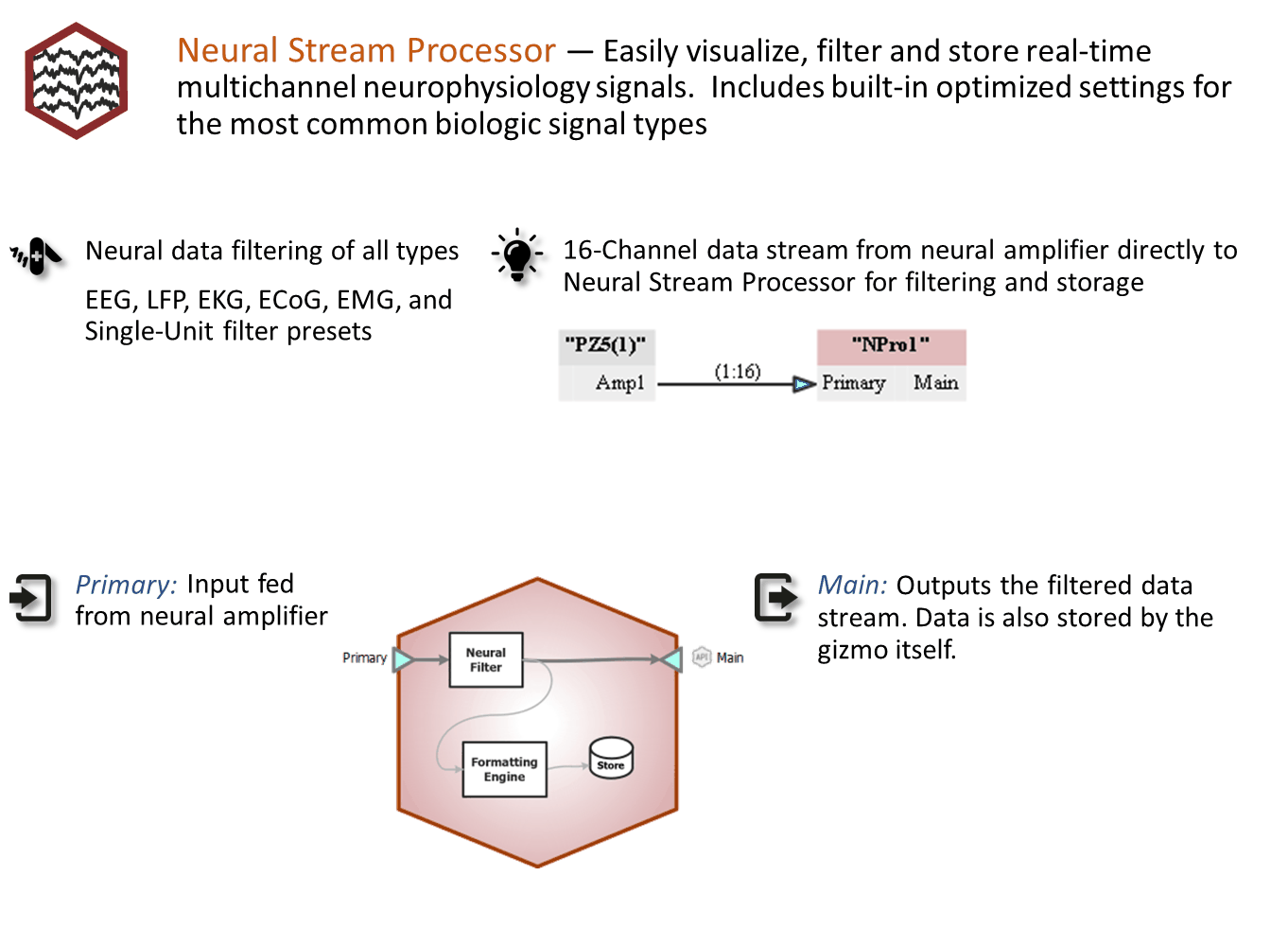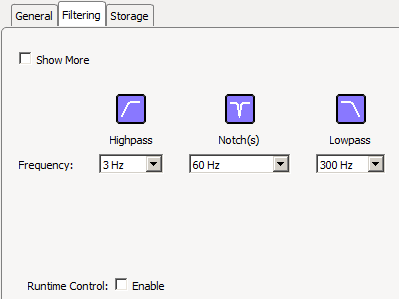Neural Stream Processor
Common Use Cases
Easily visualize, filter and store real-time multichannel neurophysiology signals. Includes built in, optimized settings for the most common biologic signal types. Use this gizmo for easy filtering and storage of common signal types: LFP, EEG, EMG, Single-Unit, EKG.
Gizmo Help Slides


Reference
The Neural Processing gizmo takes single or multi-channel floating point signals, filters the signals and optionally formats and stores into the data tank. The filtered data can also be available as an output to other gizmos for further processing.
The Neural Stream Processor Runtime Interface
 |
| Runtime Window |
Runtime Plot
A multichannel streaming plot is included in the data plot tab when storage is enabled. See Flow Plot for more information on using and customizing the plot.
NPro1 Tab
The NPro1 tab contains controls for runtime highpass, lowpass, and notch filter adjustments, if the Runtime Controls option is selected at designtime.
Neural Stream Processor Configuration Options
General Tab
 |
| General Options Tab |
Select the signal type to automatically configure default highpass, lowpass, notch settings. A depiction of the signal type, along with the current filter and storage settings, is displayed.
Filtering Tab
 |
| Filtering Options Tab |
Select the initial highpass, lowpass, and notch filter values. To modify the highpass, lowpass, and notch settings during runtime, select the Enable Runtime Control check box. Click Show More to adjust the highpass/lowpass filter rolloff in dB/Oct.
Storage Tab
 |
| Storage Options Tab |
Set the desired sampling rate of the stored data using the slider.
Click Show More to change the store name, data format, and scaling factor of the stored data.
Use the Discrete Files check box to save each channel of data as a discrete file (*.sev file) in the data tank.
Clear the Save to Disk check box to view data in the runtime plots without storing data to the Tank.